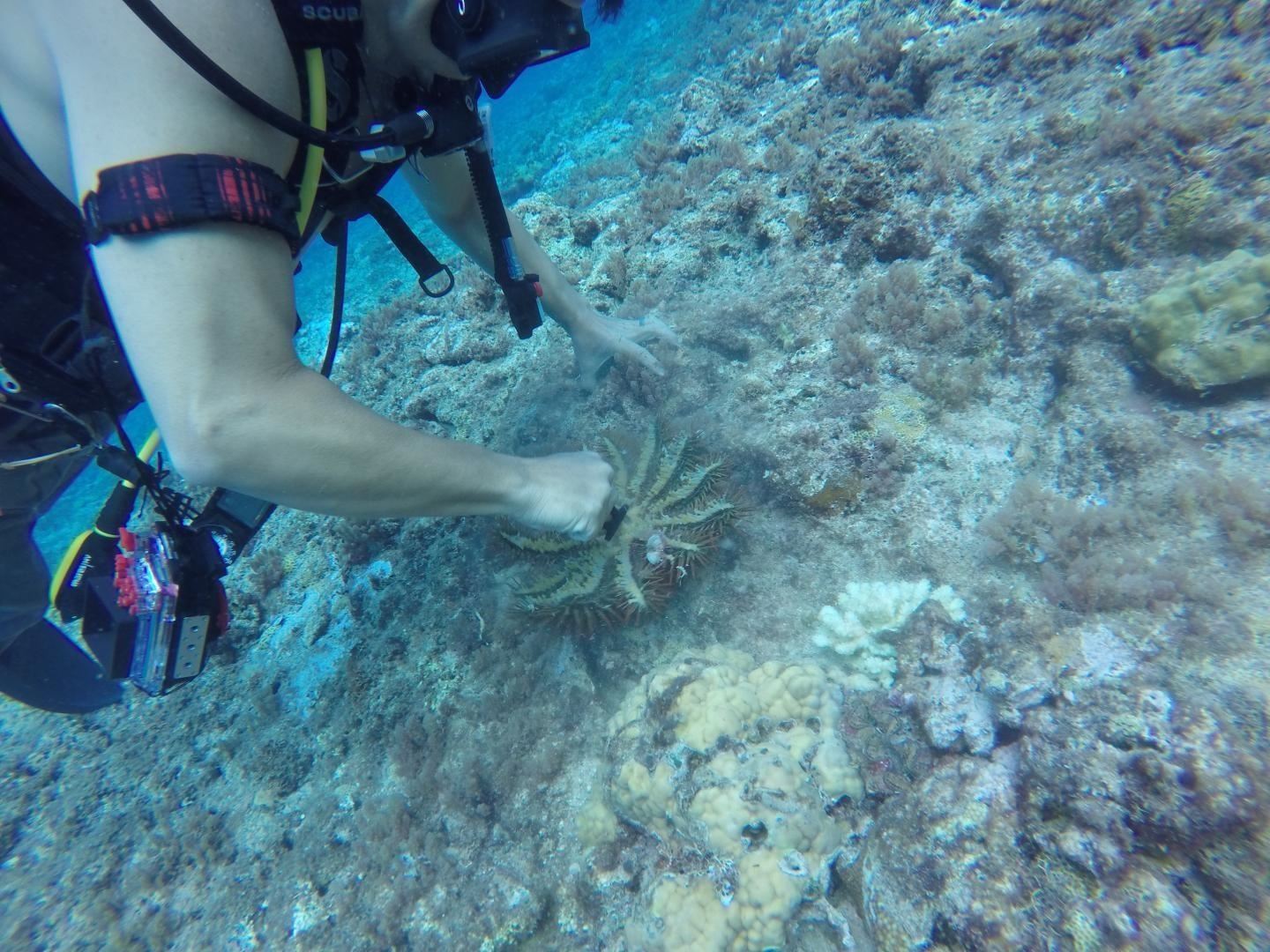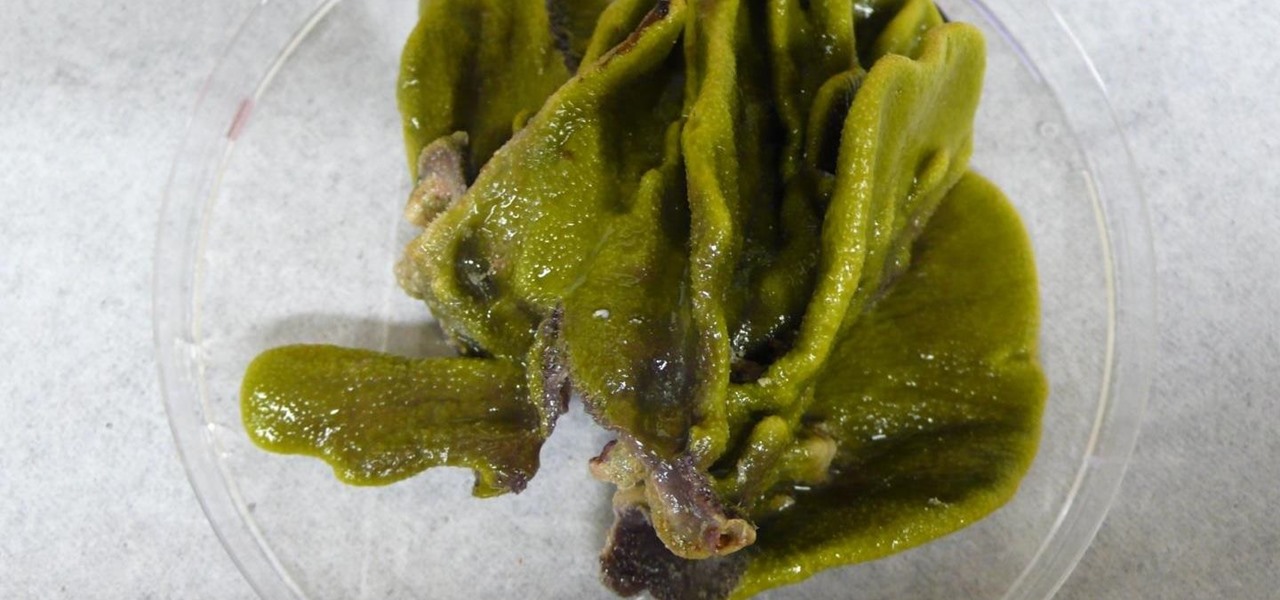We've worked hard to reduce the flow of toxic chemicals into our waterways, which means no more DDT and other bad actors to pollute or destroy wildlife and our health. But one observation has been plaguing scientists for decades: Why are large quantities of one toxic chemical still found in the world's oceans?
There have been hints that humans weren't the source of these toxic chemicals once used to make materials flame retardant and found in abundance in the oceans — they aren't exactly the same chemical structure as the man-made versions — but that still doesn't tell us where they came from.
A group of researchers from Scripps Institution of Oceanography, in collaboration with chemists and biologists at the University of California, San Diego, as well as researchers from the University of Utah, Smithsonian Marine Station at Fort Pierce, and University of Guam Marine Laboratory, have discovered the source of the chemical. It's produced by bacteria living in sea sponges.

The research study that produced the discovery is published in the May issue of the journal Nature Chemical Biology.
The Halogenated Bad Guys
The worrisome chemicals are the polybrominated diphenyl ethers (PBDEs), a group of halogenated compounds. Halogenated compounds have a fluorine, chlorine, bromine, iodine, or astatine as part of their chemical structure. You might know them by names like DDT (dichlorodiphenyltrichloroethane), PCB (polychlorinated biphenyl), or TCDD (polyhalogenated dibenzo-p-dioxin).
While extremely toxicity, these chemicals served some purposes. DDT killed insects, including mosquitoes, that carried malaria and other diseases in the US and some African countries still use it for that purpose (the US banned its use in 1972).
The US banned production of PCBs in 1979, but before that, these compounds were industrial coolants and used in transformers, fluorescent light ballasts, oil-based paint, and many other products.
TCDD was a very unfortunate and very toxic byproduct of many manufacturing processes including smelting, chlorine bleaching of paper pulp, and the manufacturing of some herbicides and pesticides. It was a contaminant in the defoliant, Agent Orange, used during the Vietnam War. Scientists have linked it to liver and metabolic disorders in humans and cancer in animals.
The production of PBDE was phased out in 2004. Man-made PBDEs are industrial chemicals added to many products, including fabric and electronics, to raise the temperature at which the products will burn. PBDEs are also powerful endocrine disruptors; They affect the normal functions of the body's hormones, most notably, the thyroid hormone that regulates metabolism.
These and other halogenated chemicals bioaccumulate in marine life. That means that if the chemical is present in a plant eaten by fish, the chemical stays in the fish and its level increases with each contaminated plant it eats. When humans eat the fish, they ingest the accumulated dose of the compound. Once in the ocean, even if no more of these toxic chemicals are added, they persist and accumulate in the food chain.
What puzzled scientists was the source of PBDE in the world's oceans. It was similar, but not identical, to man-made PBDE, so it was likely that it was being manufactured right there in the ocean.
The Unlikely Source of PBDEs
In 2014, Dr, Vinayak Agarwal, a postdoctoral researcher for Scripps Oceanography, and his colleagues, found that certain bacteria produced small quantities of PBDE. They began their new investigation by collecting sponges, because sponges get food and oxygen by filtering seawater through the pores and channeling it into their bodies, and microorganisms filtered with the water end up residing in the sponges.
The research team collected 18 sponge samples for the study during two research expeditions to Guam. They used a genome-mining technique developed by Scripps marine chemist Bradley Moore and an environmental DNA sequencing approach pioneered by Scripps biologist Eric Allen to identify the genes and source of the naturally produced PBDEs.
They found cyanobacteria living in the sponges in an endosymbiotic relationship — the sponge and the bacteria both benefitted from the living arrangement. The cyanobacteria produced PBDE in abundance and proved to be the source of the chemical found in the ocean.
"For the first time we were able to conclusively show that genes and enzymes produced in bacteria from sponges are responsible for the production of these compounds toxic to humans," Agarwal, co-first author of the paper (aside graduate student Jessica Blanton), said in a press release from UC San Diego.
But why in the world would organisms that live in an aquatic environment need a chemical that resembles our man-made flame retardant? There's a purpose there waiting to be discovered and that is one of the scientists next avenues of investigation — that, along with any human health concerns associated with these naturally-occurring PBDEs.
"We care about naturally produced PBDEs because they end up in the food chain," Frederick Tyson, of the National Institute of Environmental Health Sciences, said in the press release. "Preliminary data from this research team suggest that some naturally occurring PDBEs may be even more toxic than those that are man-made, so we need to develop a better understanding of these compounds."
Just updated your iPhone? You'll find new emoji, enhanced security, podcast transcripts, Apple Cash virtual numbers, and other useful features. There are even new additions hidden within Safari. Find out what's new and changed on your iPhone with the iOS 17.4 update.


























Be the First to Comment
Share Your Thoughts